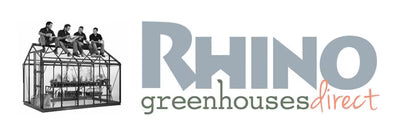Can’t figure out why some plants grow well, while others fail to get started? Chances are, with a small tweak to your gardening regime, those tricky species will start thriving in your care. Here are some of the top mistakes that we see home gardeners making time and again, plus tips on how to avoid them.
How to avoid gardening mistakes
No one gets gardening right all the time. It’s an inexact science, and even seasoned growers make mistakes. But you can increase your chances of success by carrying out some research before welcoming a new plant to your home or garden. Find out where it likes to live and how it likes to be treated, so you can give it what it needs and avoid these eight (very) common gardening mistakes that are made over and over.
1. Overwatering
It’s easy to get carried away and shower too much love on a new plant (quite literally!). But most don’t need as much water as we think they do. In fact, excess moisture can lead to root rot and fungal disease.
Before you bring out the watering can, stick a finger into your plant’s soil. If the compost is dry a couple of centimetres down, give it some water. If not, check back in a day or two before giving the plant another drink.
Ensure container plants have adequate drainage. Choose pots with holes in the base and stand outdoor planters on pot feet or bricks to help water run off.
Before planting in the ground, examine the make-up of your soil. Most plants prefer free-draining ground (though check before planting!). If you’re on heavy clay, mix some grit or gravel into the soil to improve drainage before planting, or grow plants in raised beds instead, to prevent water sitting around their roots.
2. Underwatering
Just as overwatering can cause issues in plants, so can too little hydration. A lack of water stresses plants and hinders their growth.
Classic signs of underwatering include:
- Leaves turning yellow or brown at the edges, or curling and dropping off
- Stems going crisp or drying out
- Soil pulling away from the sides of the pot.
Outdoor plants are unlikely to dry out unless there’s a drought. During a heatwave, keep an eye on beds and borders and unravel the hose if it looks like your garden needs a helping hand.
Plants in containers dry out much more quickly and need hydrating regularly throughout the summer. Make sure you give them enough water so that it runs freely from the bottom of the pot. This will ensure the compost is saturated; once the top inch or two dries back out, it’s time to water again.
3. Poor soil preparation
If you neglect to nurture your soil, your plants may suffer, too. Poor soil can lead to stunted growth or nutrient deficiencies. By taking time to improve the ground they grow in, you’ll set your plants up for success.
Before bedding plants in borders or containers, check the type of soil they need. Testing your soil to check the existing makeup and pH is also useful. If plants need conditions your garden doesn’t currently provide, you can use grit or organic matter to improve texture and fertility.
Adding an annual boost of compost or well-rotted manure to the ground improves the general soil structure. This helps with water retention and keeps your garden topped up with beneficial nutrients. By mixing sand or gravel into heavy soil, you’ll improve drainage and avoid root rot and other problems.
4. Planting in the wrong spot
The famous plantswoman, Beth Chatto was known for her, ‘right plant, right place’ approach to gardening, and the adage still makes a lot of sense. Placing plants where they’re unlikely to thrive can lead to poor growth, a lack of flowers, or plant death.
There are a few factors to consider when picking the perfect planting location:
- Aspect: Check the light levels your plant prefers and select a spot that’s just right. Sun-loving plants won’t tolerate shady corners, and shade-tolerant species won’t thank you for planting them in a south-facing bed.
- Soil: Bed your plant in ground it loves. Some species prefer acidic soil, while others need an alkaline foundation to sink their roots into.
- Protection: Plants in exposed sites may need extra shelter from the elements, particularly wind and frost. Site tender plants in parts of the garden that have a buffer or move them to a safer space if wild weather is on the way.
5. Ignoring pests and diseases
One of the most common mistakes made in gardening is failing to check plants for pests and diseases. By spotting the signs early, you can prevent widespread damage and maintain the health of your whole garden.
If left unchecked, pests and diseases can lead to stunted growth and poor flowering or may spread to other plants and cause further damage.
Rather than ignoring the issue, regularly examine foliage for aphids and caterpillars, and diseases like blight, plant rust or powdery mildew. Leaves and stems may be discoloured, damaged or marked. To prevent the problem from spreading, remove damaged or infected foliage (throw it in the bin, rather than onto a compost heap) or treat plants with a pest control, to nurse your garden back to health.
6. Over-fertilising
While it’s important to feed soil, you can apply too much of a good thing. Excess fertiliser can disrupt the balance, rather than aiding plants’ growth.
A build-up of excess nutrients in the soil may eventually lead to root burn, stunted growth or yellow foliage. And application won’t just affect the plants you’re actively nurturing; you’ll likely see an increase in weeds, only adding to your gardening task list.
Avoid overfertilising by following recommended advice for the fertiliser you’re using. Ahead of time, carry out a soil test to see if your beds lack any particular nutrients, and adapt accordingly.
7. Improper pruning
Poor pruning techniques can do more harm than good. Common pruning mistakes include cutting back at the wrong time of year, making poor cuts, and removing too much material.
Pruning at the wrong time of year can significantly weaken plants. Before getting out the secateurs or saw, check the best time to knock them back so they emerge stronger. Woody plants, for example, are best pruned in late winter or early spring, so they have ample resources to regrow throughout the year.
It’s important to cut back to a point just above buds or growing nodes so that the plant can still put on new growth. Use clean tools and make decisive cuts to avoid infection. Cutting too many branches or leaves can weaken plants by making it hard for them to photosynthesise.
8. Neglecting mulch
Mulch can improve growth when applied around the base of plants. However, many gardeners overlook the benefits of mulch, leading to poor soil health.
A regular application of fresh organic material on top of beds and containers can help to:
- Retain moisture in the soil
- Suppress weeds
- Protect soil structure.
When applying mulch, spread it around the base of the plant, leaving 5-10cm of clear space around the stem, to guard against rot.
How do I keep my plants alive?
By avoiding these common gardening mistakes, you can help your plants to thrive and keep your home and garden looking beautiful. Taking time to understand the conditions each plant needs and tailoring your approach will make it easier to care for them and keep them in good health for longer.




